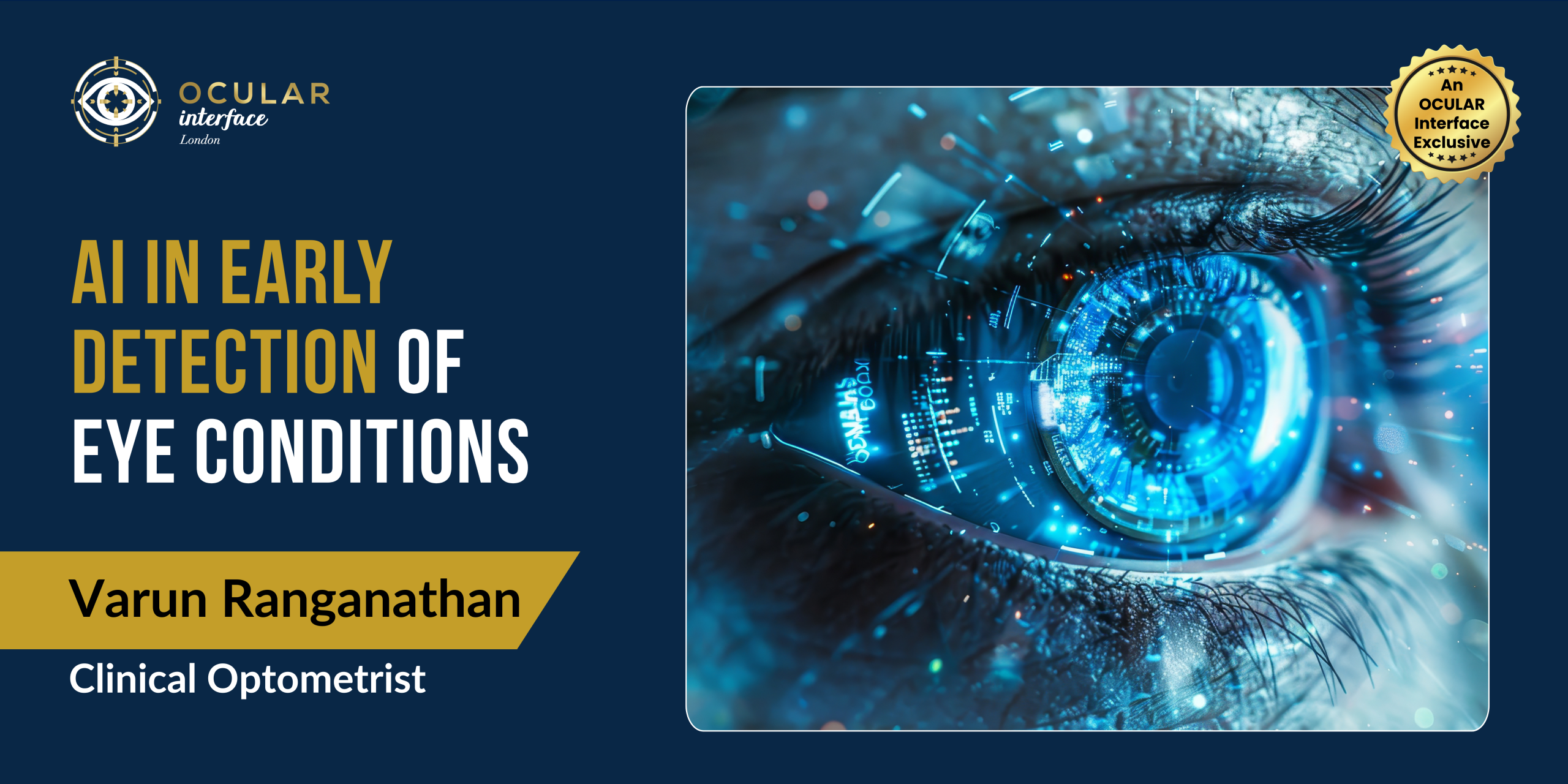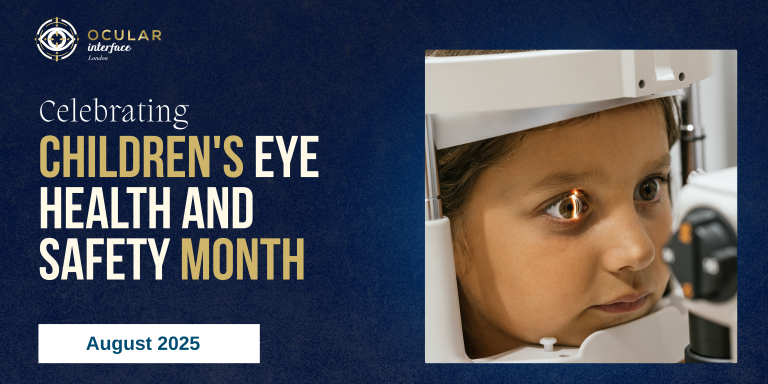Varun Ranganathan, MCOptom
Clinical Optometrist
An OCULAR Interface Exclusive
AI in Early Detection of Eye Conditions
Artificial Intelligence (AI) is increasingly transforming healthcare, and eye care is one of the most promising fields where its impact is already visible. The ability of AI systems to detect subtle patterns in ocular images has made it a powerful ally in the early detection of eye conditions that often go unnoticed until irreversible damage occurs (Abràmoff et al., 2018).
Diabetic Retinopathy and Macular Degeneration
AI has proven highly effective in detecting diabetic retinopathy (DR) and age-related macular degeneration (AMD)—two leading causes of vision loss worldwide. Deep learning algorithms trained on thousands of retinal images can now identify early disease signs with accuracy comparable to expert ophthalmologists (Gulshan et al., 2016; Ting et al., 2017). For instance, the FDA-approved IDx-DR system allows primary care providers to screen for DR without specialist input, helping to catch disease earlier and expand access to care (Abràmoff et al., 2018).
Glaucoma
Glaucoma is notoriously difficult to detect in its early stages. However, AI tools analysing optic nerve head images and visual field data can pick up early indicators of glaucomatous damage that clinicians might overlook (Li et al., 2018; Tham et al., 2014). By integrating these tools into routine practice, the chances of preventing long-term sight loss increase significantly.
Retinopathy of Prematurity (ROP)
ROP affects premature babies and requires timely diagnosis to prevent blindness. AI-powered systems, such as DeepROP, have shown remarkable sensitivity in identifying disease severity from retinal photographs (Brown et al., 2018). This technology can assist neonatal units in low-resource settings where access to paediatric ophthalmologists is limited.
Systemic Health Insights
Interestingly, AI’s ability to analyse retinal images extends beyond ocular health. The retina provides a window into systemic diseases such as cardiovascular disease, dementia, and even Parkinson’s. Studies suggest that AI algorithms can detect biomarkers for these conditions, paving the way for eye exams to play a larger role in whole-body health assessment (Poplin et al., 2018; Cheung et al., 2021).
While the promise of AI is enormous, challenges remain. Data diversity, algorithm transparency, and clinical validation are critical for ensuring reliability (Beede et al., 2020). Importantly, AI should be seen as a supportive tool rather than a replacement for clinicians, providing them with sharper diagnostic accuracy and the ability to focus more on patient-centred care (Kelly et al., 2019).
Conclusion
AI is reshaping how we approach eye health. From diabetic retinopathy to glaucoma and childhood conditions, AI is bringing early detection within closer reach, ultimately protecting vision and improving lives. As research and clinical adoption advance, the fusion of AI with human expertise will redefine the standard of preventive eye care.
References
- Abràmoff, M. D., et al. (2018). Pivotal trial of an autonomous AI-based diagnostic system for detection of diabetic retinopathy in primary care offices. NPJ Digital Medicine, 1(1), 39.
- Beede, E., et al. (2020). A human-centered evaluation of a deep learning system for assisting ophthalmologists in detecting diabetic retinopathy. Proceedings of CHI, 1–12.
- Brown, J. M., et al. (2018). Automated diagnosis of plus disease in retinopathy of prematurity using deep convolutional neural networks. JAMA Ophthalmology, 136(7), 803–810.
- Cheung, C. Y., et al. (2021). Retinal biomarkers in the prediction of systemic diseases and mortality. Progress in Retinal and Eye Research, 83, 100933.
- Gulshan, V., et al. (2016). Development and validation of a deep learning algorithm for detection of diabetic retinopathy in retinal fundus photographs. JAMA, 316(22), 2402–2410.
- Kelly, C. J., et al. (2019). Key challenges for delivering clinical impact with artificial intelligence. BMC Medicine, 17(1), 195.
- Li, Z., et al. (2018). Efficacy of a deep learning system for detecting glaucomatous optic neuropathy based on fundus photographs. Ophthalmology, 125(8), 1199–1206.
- Liu, T. A., et al. (2019). Computer-aided detection of leukocoria using family photographs. Pediatrics, 143(4), e20182103.
- Poplin, R., et al. (2018). Prediction of cardiovascular risk factors from retinal fundus photographs via deep learning. Nature Biomedical Engineering, 2(3), 158–164.
- Tham, Y. C., et al. (2014). Global prevalence of glaucoma and projections of glaucoma burden through 2040: A systematic review and meta-analysis. Ophthalmology, 121(11), 2081–2090.
- Ting, D. S. W., et al. (2017). Development and validation of a deep learning system for diabetic retinopathy and related eye diseases using retinal images from multi-ethnic populations with diabetes. JAMA, 318(22), 2211–2223.










